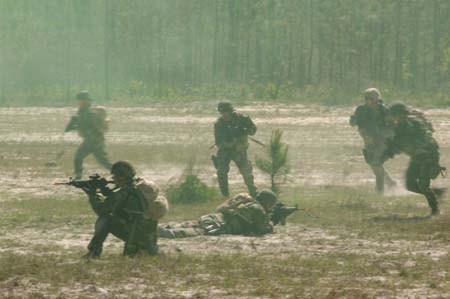Amo ng several points made last week by Robert Martinage with the Center for Strategic and Budgetary Assessment during a House hearing on special operations forces was the need to expand Air Force Special Operations Command’s combat aviation adviser (also known as aviation foreign internal defense, or AvFID) rolls. Roger Carstens with the Center for a New American Security, would expand that list to include more special tactics forces. The Pentagon in early 2006 directed AFSOC to double the size of its 6th Special Operations Squadron from 110 to 230 AvFID advisers, but Martinage told a House Armed Services panel, “That expansion is still insufficient.” He believes, like other defense analysts, that AFSOC must create a wing-level organization. Carstens told the lawmakers that these billets require “the most experienced AFSOC personnel,” calling the challenge to fill additional slots “a bit to ask an already overstretched organization.” Carstens noted, too, that AFSOC’s elite STS field is “manned at only 75 percent” and predicted that trend would continue “as AFSOC faces emerging and expanding missions overall.” (Martinage written testimony; Carstens written testimony)
ng several points made last week by Robert Martinage with the Center for Strategic and Budgetary Assessment during a House hearing on special operations forces was the need to expand Air Force Special Operations Command’s combat aviation adviser (also known as aviation foreign internal defense, or AvFID) rolls. Roger Carstens with the Center for a New American Security, would expand that list to include more special tactics forces. The Pentagon in early 2006 directed AFSOC to double the size of its 6th Special Operations Squadron from 110 to 230 AvFID advisers, but Martinage told a House Armed Services panel, “That expansion is still insufficient.” He believes, like other defense analysts, that AFSOC must create a wing-level organization. Carstens told the lawmakers that these billets require “the most experienced AFSOC personnel,” calling the challenge to fill additional slots “a bit to ask an already overstretched organization.” Carstens noted, too, that AFSOC’s elite STS field is “manned at only 75 percent” and predicted that trend would continue “as AFSOC faces emerging and expanding missions overall.” (Martinage written testimony; Carstens written testimony)
The Space Development Agency says it’s on track to issue its next batch of missile warning and tracking satellite contracts this month after those awards were delayed by the Pentagon’s decision to divert funds from the agency to pay troops during this fall’s prolonged government shutdown.

